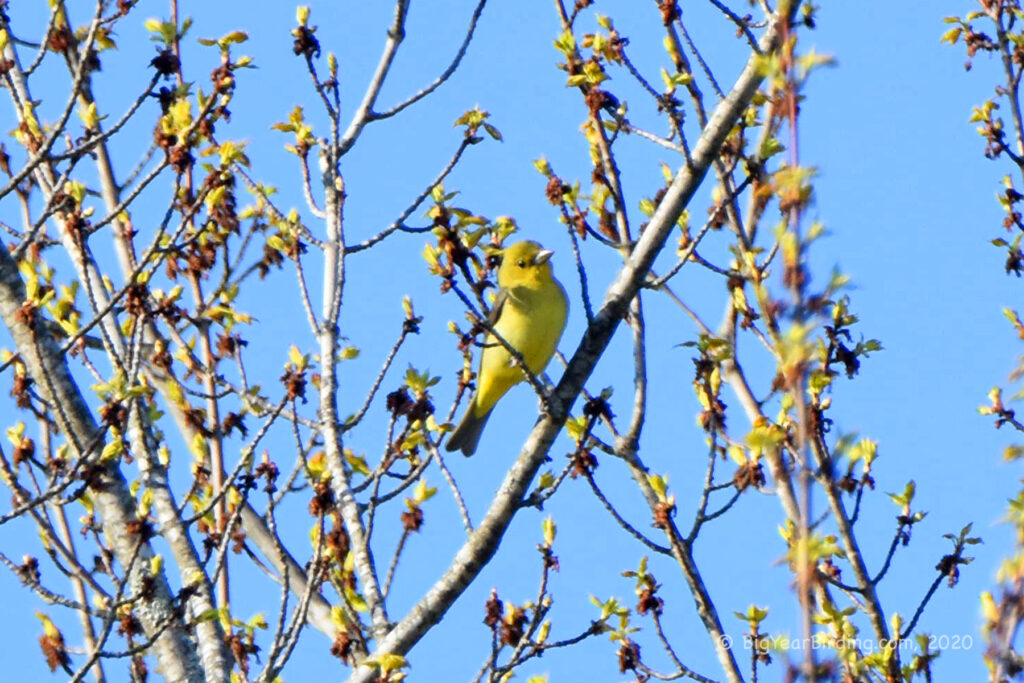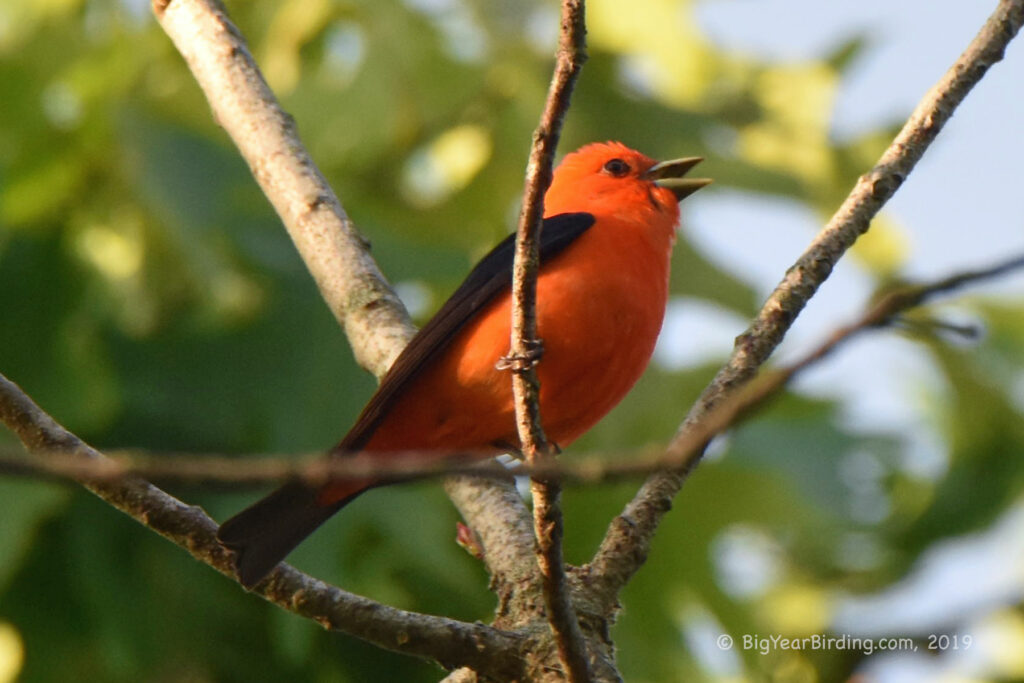
The Scarlet Tanager (Piranga olivacea) is a brightly colored bird species that can be found in the eastern regions of North America. It measures approximately 7.5 inches in length and weighs around 0.8 ounces. The male Scarlet Tanager has a bright red plumage with black wings and tail, while the female is mostly yellow-green in color with darker wings and tail.

One of the most distinguishing field marks of the male Scarlet Tanager is its bright red color, which is unmistakable against the green foliage of its habitat. In contrast, the female has a more subdued coloration, but can be recognized by her yellow-green body with a darker greenish-brown back and wings. Both males and females have short, thick bills and black legs.
Scarlet Tanagers are migratory birds and breed in the eastern United States and Canada during the summer months. In the fall, they migrate to Central and South America, where they spend the winter. During their migration, Scarlet Tanagers can be seen in large flocks, often traveling alongside other migratory bird species. Their spring migration usually occurs in April, while their fall migration begins in August.
Scarlet Tanagers prefer to inhabit deciduous forests and can be found in wooded areas with oak, maple, and beech trees. They are primarily insectivorous and feed on a variety of insects, including beetles, wasps, and caterpillars. During the breeding season, they also consume fruit, such as wild berries.

Although Scarlet Tanagers are relatively common, their populations have been declining due to habitat loss and fragmentation. Conservation efforts are underway to protect their breeding and wintering habitats, as well as to reduce threats from predation and other factors. By preserving their habitats and promoting sustainable land use practices, we can help ensure the survival of this beautiful species for generations to come.

